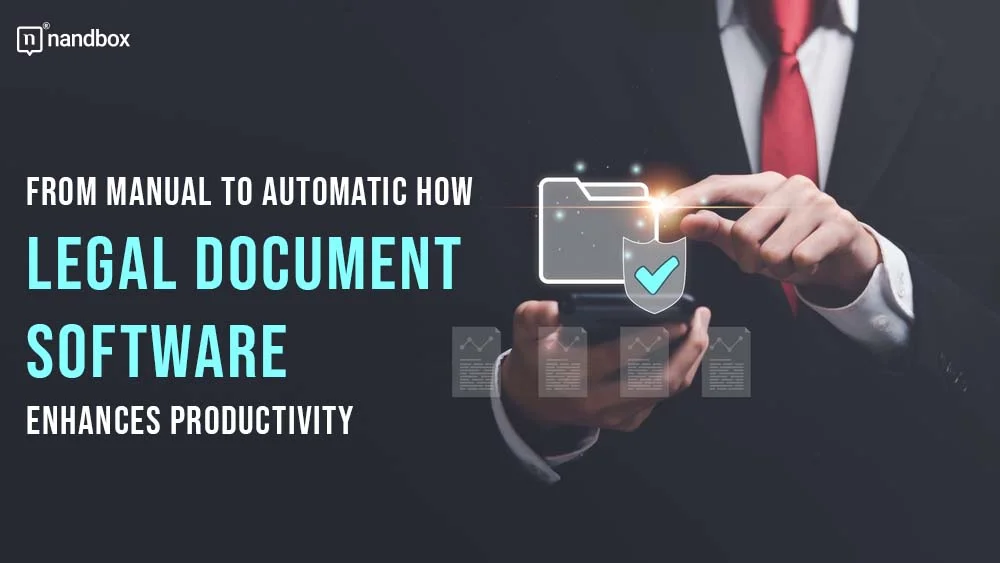You may ask how much time lawyers or paralegals devote to signing or turning the pages of documents. In traditional legal practice, client files and papers can be a source of concern in that they tend to demand the lawyer’s attention more than the practice of law itself. As they say, time is money, and in a world where accuracy is the mantra, wasting time becomes an expensive luxury that one cannot afford. This change from ‘manual’ to ‘automatic’ legal document software management is not a minor advancement; it is a revolution in the law firm system, which entails productivity gains.
The Old School: A Walk Through the Manual Process
Description of Manual Processes
Previously, the management of legal documents included drafting, reviewing, and signing legal documents using typewriters and early versions of word processing software. This approach was less efficient; with each edit, it was necessary to re-key the information and make additions manually. The introduction of Legal Document Automation Software has transformed these practices by streamlining the editing and management processes. Once you sign the documents, they no longer require huge filing systems that occupy a lot of office space and resources. This confirms that transitioning from manual methods to automated solutions saves time and space, optimizing the handling of various processes to ensure better results.
The pitfalls of the manual process are numerous.
- Time Consumption: Manual handling of legal documents, therefore, consumes minutes and, in some cases, hours.
- High Error Rates: Manual handling also increases the probability of incorrect entries, from misspellings to wrong figures.
- Cost Implications: In general, it is clear that more time and errors cost law firms and their clients more.
The Winds of Change: An Introduction to Automation
Some specific technologies and tools assist in creating, storing, and managing legal documents. These tools incorporate modern technologies to perform many tasks that would require you to manually accomplish them. Additionally, they may need you to format the documents according to the existing standards and check the documents’ compliance with the current legislation. Things moved gradually but steadily towards the digital way of working. First, the use of computers in the storage and retrieval of documents has played a key role in the actual beginning of using computers in the legal field. However, the true opening has been the creation of software that you use in the cycle of the management of legal documents.
Legal document automation software can be used for various purposes, such as creating power of attorney (POA) documents, managing administrative tasks, generating contracts, handling estate planning, and ensuring regulatory compliance. POA software specifically helps streamline the process of drafting, customizing, and managing power of attorney documents, making it easier for legal professionals to meet clients’ needs efficiently. Firms that opt to manage a new set of circumstances regarding automation notice that this technology reduces time and enhances the accuracy of work and overhead costs.
The Brass Tacks: How Automation Enhances Productivity
There is a long list of document automation software features that immensely help improve the legal documentation part. First, it enables Template Creation, which lets the lawyers create templates for the most frequently used documents. It is possible to reuse such templates and make modifications as necessary; that simplifies the process and makes all paperwork in the legal field more cohesive. Also, there are Clause Libraries where the most frequently used clauses are kept to be inserted with certain modifications in the newly created documents.
This feature raises the level of flexibility in efficiency and accuracy. Finally, auto-fill features involve entries of data that are automated. Ones that you may find recurrent in the preparation of documents. Such as the names and addresses of clients. These capabilities improve productivity and decrease the rate of mistakes within the firm, especially among legal professionals.
Case Studies or Statistics
Automating this area has been proven to reduce document creation time by as much as seventy percent. For example, a mid-sized law firm said it could cut down by half the time it took to generate basic contracts. Any software used in today’s vigorous and intense legal workplace must “deliver the goods,” meaning it has to execute operations efficiently and without error. This efficiency is paramount for legal firms that seek to maintain competitiveness because the automation tool is expected to surpass the legal profession’s high standards for document management.
More Bang for Your Buck: The Cost-Effectiveness of Automation
Comparing the costs of manual and automated systems shows that while there is a one-off cost of investing in software, there is a huge saving in the long run. Through automation, there is less of a requirement for many clerical personnel and a shrinkage of the costs related to mistakes. Hence, the value realized from document automation tools is monetary and qualitative improvement in accuracy, compliance, and client satisfaction. Indeed, firms that ventured into automation are getting more bang for their buck with considerable returns from a relatively lower investment amount.
Avoiding the Pitfalls: Common Concerns and Solutions
Some practitioners resort to expressing their worries about automation in the legal field, and the most common worries are the loss of jobs and detached perspectives in documents. Subsequently, speculations have arisen due to the erroneous notion that the use of bots would eliminate specific legal positions and demoralize the distinct forms of personality that law entails.
To integrate automation smoothly:
- Training: Give full practical training to all the users so that they can work seamlessly and do not have any difficulties.
- Phased Implementation: People can start with minor documents to help them be sure and notice all potential problems.
Embracing Automation in Legal Practices
The transition from the traditional paper-based documentation system into an electronic system in law practices brings instrumental benefits that are quite hard to ignore. Having demonstrated its positive effects on productivity, costs, and errors, legal document automation software is no longer a frivolous addition but a necessity of today’s practice. Finally, regarding advice to law firms, the last message from these findings is that there is no time to lose: they should put these technologies into practice without further delay. In many developed countries, it is all about the flow of the world and constantly improving approaches through tools that help to avoid mistakes and spend more time on essential tasks.




